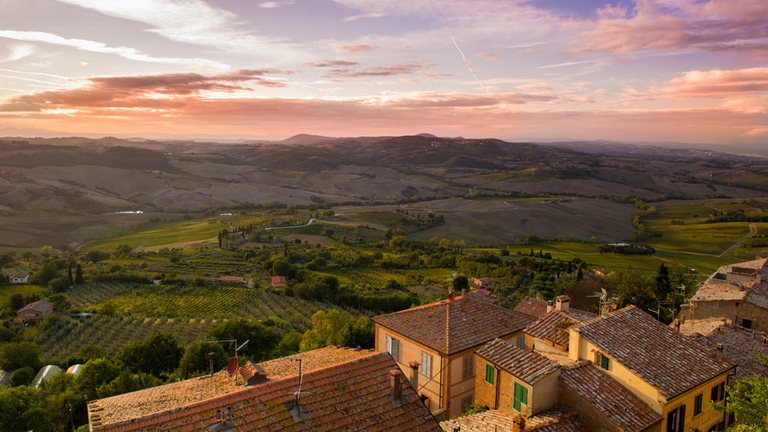
After a landslide led to twelve deaths on the island of Ischia, questions have been raised about the impacts of illegal building, tourism, and climate change.
The connection between production areas and the agricultural and cultural identity is critical in transforming an ordinary wine into a world-renowned quality one. Tuscany in Italy, Bordeaux and Rhone in France, the Napa Valley in California and the coastal areas of Chile are just some of the most important regions when it comes to wine production.
The connection between production areas and the agricultural and cultural identity is critical in transforming an ordinary wine into a world-renowned quality one. Tuscany in Italy, Bordeaux and Rhone in France, the Napa Valley in California and the coastal areas of Chile are just some of the most important regions when it comes to wine production. For centuries these areas have been home to high quality vineyards thanks to unique weather conditions. But things could change and these areas are likely to lose their prestige due to a decline in crops caused by climate change.
This scenario is outlined in a study conducted by the NGO Conservation International and published in the journal Proceedings of the National Academy of Sciences. Researchers led by Hannah Lee used 17 different climate models to understand the effects that a warmer climate has on nine major wine-producing regions.
The forecast for the next 50 years were made assuming an average temperature increase of 2.5 degrees (a likely scenario) and 4.7 degrees, the worst case scenario predicted by climate scientists of the United Nations Intergovernmental Panel on Climate Change (IPCC). In both cases, the industry will undergo a revolution in geographic areas where Europe is the main victim of the negative effects of global warming, with an expected drop in production of 85 per cent in the areas bordering the Mediterranean Sea, such as the Italian Tuscan and the French Bordeaux regions. The same fate may also be suffered by the interior states of Australia (-74 per cent), California (-70 per cent), South Africa (-55 per cent), and Chile (4-0 per cent).
“It will be harder and harder to grow those varieties that are currently growing in places in Europe,” Hannah Lee said. “It doesn’t necessarily mean that vineyards can’t be grown there, but it will require irrigation and special inputs to make it work, and that will make it more and more expensive”. This is because mild winters and dry summers will be replaced by a warmer climate, like in North Africa.
On the contrary, climate change may open up new regions of the world to the wine industry. Are you ready to taste wines from Britain or from Tasmania? These, together with the wilderness areas around Yellowstone National Park, in the northern United States, or even some of the highlands of central China, may be areas where the production of quality wines may move within the next 30 years.
Siamo anche su WhatsApp. Segui il canale ufficiale LifeGate per restare aggiornata, aggiornato sulle ultime notizie e sulle nostre attività.
![]()
Quest'opera è distribuita con Licenza Creative Commons Attribuzione - Non commerciale - Non opere derivate 4.0 Internazionale.
After a landslide led to twelve deaths on the island of Ischia, questions have been raised about the impacts of illegal building, tourism, and climate change.
Not much snow, peaks of 19 degrees Celsius in Norway and even 28 degrees in France: official data confirms the anomalously high temperatures of this past winter.
Ocean warming has risen to record highs over the last five years: just in 2019 the heat released into the world’s oceans was equivalent to that of 5-6 atomic bombs per second. The culprit, no doubt, is climate change.
What did Greta Thunberg tell participants at the 2020 World Economic Forum in Davos? Once again, the Swedish activist underlined the total lack of concrete solutions to the climate crisis presented by leaders so far.
The list of human and animal victims of the Australia wildfires keeps growing – one species might already have gone extinct – as the smoke even reaches South America.
Kivalina is located on a small island once guarded by sea ice, which is now melting due to global warming. While the sea threatens to wipe the village off the face of the Earth, its inhabitants refuse to give up their lives and traditions.
Thanks to activists, the voice of the world’s peoples resounded through the COP25 like an alarm bell. Governments didn’t reach the results they demanded, but their cries and messages were stronger than ever, reaching even those who weren’t in Madrid.
Climate change poses a risk for millions. However, women are the most vulnerable to its negative consequences: a few simple considerations by the Italian Climate Network help us perceive the global implications of this.
The COP25 ended two days late and with very few steps ahead made. Climate negotiations in 2020 will be an uphill battle as political will clearly seems to be lacking, once again.









